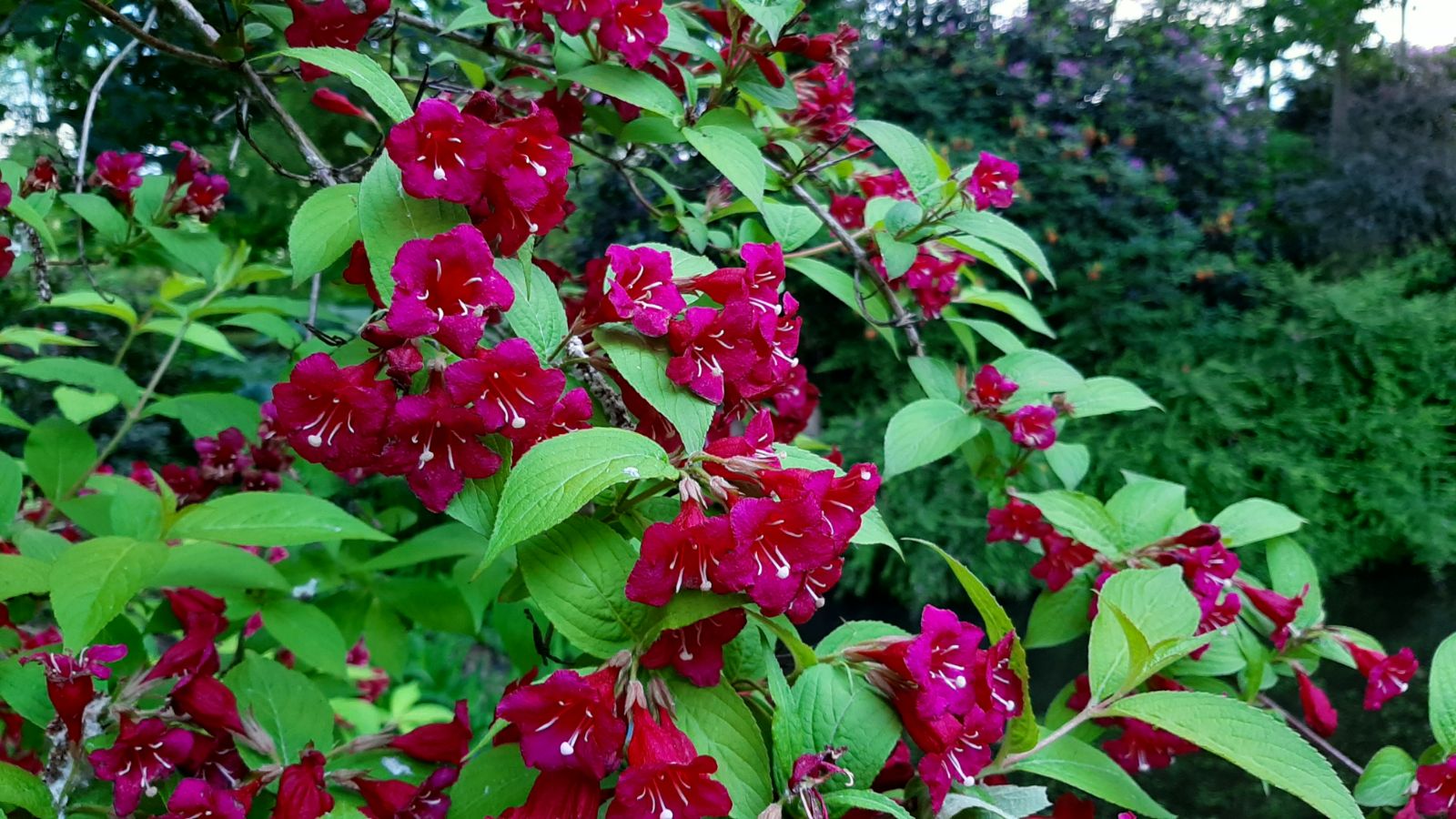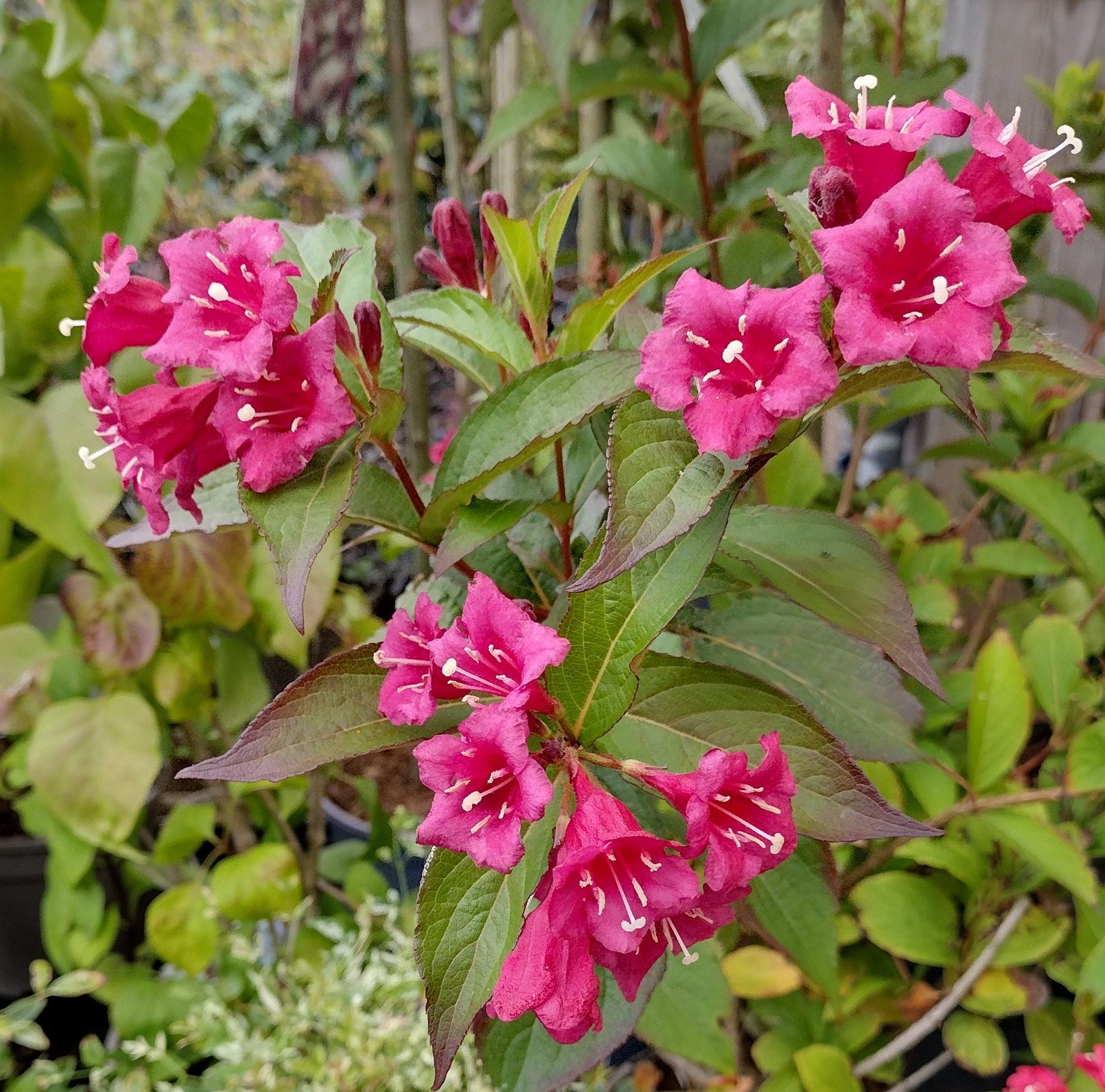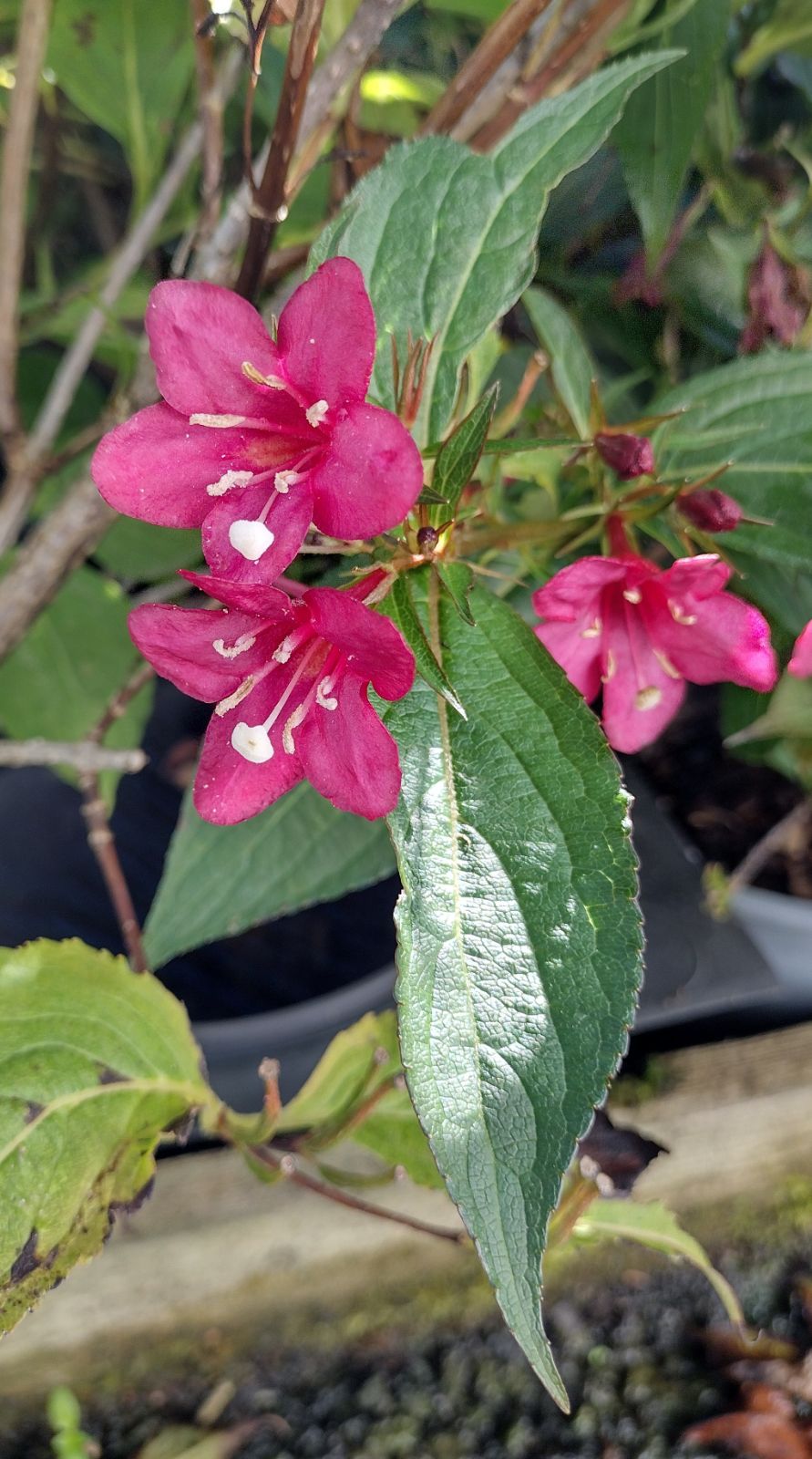Weigela Red-Flowered Group
Sponsor
Kindly sponsored by
The Normanby Charitable Trust
Credits
Tom Christian & Alan Elliott (2019)
Recommended citation
Christian, T. & Elliott, A. (2019), 'Weigela Red-Flowered Group' from the website Trees and Shrubs Online (treesandshrubsonline.
Genus
Infraspecifics
Other taxa in genus
- Weigela Aurea Group
- Weigela Bicolor Group
- Weigela coraeensis
- Weigela decora
- Weigela Dwarf Group
- Weigela floribunda
- Weigela florida
- Weigela hortensis
- Weigela japonica
- Weigela maximowiczii
- Weigela middendorffiana
- Weigela Pink-Flowered Group
- Weigela Purpurea Group
- Weigela subsessilis
- Weigela Variegata Group
- Weigela White-Flowered Group
Leaves green. Adult plants usually more than 1 m tall and broad. Flowers red or purple-red. The standard cultivar is ‘Bristol Ruby’ (Hoffmann 2008).
'Ballet'
A cross of Weigela ‘Boskoop Glory’ and W. ‘Newport Red’, this is a shrub of 1.5–2 m height with dark pinkish-red flowers. It originated at the Boskoop Experimental Station in 1958 (Howard 1965).
'Bokrabob'PBR
Synonyms / alternative names
Weigela LITTLE RED ROBIN
A relatively new selection from Boot & Co, Boskoop, released c. 2007. It is a relatively compact selection, to c. 1.2 m tall and broad, flowering over a long period from late spring to early autumn (Hoffmann 2007).
'Bristol Ruby'
Raised by Alex Cummings in Bristol, Connecticut, in 1941. It has since become very popular and widely available in North America and in Europe for its bright red flowers on a vigorous upright bush. Originally described by its breeders as ‘Hybrids of W. rosea [sic] and W. ‘Eva Rathke’. Color of ‘Eva Rathke’ but habit more erect and more vigorous and hardier’ (Howard 1965).
'Centennial'
Of North American origin, this selection combines upright growth, purple-red flower colouration and exceptional hardiness (Hoffmann 2007).
'Courtadur'
Synonyms / alternative names
Weigela GRENADINE
Weigela 'Courtador'
Selected in France as a sport of Weigela ‘Bristol Ruby’ this clone is described as semi-dwarf, with small dark-red flowers (Hoffmann 2007).
'Courtared'
Synonyms / alternative names
Weigela LUCIFER
Raised at the INRA, Angers, France in c. 1985. It is a medium-large shrub characterised by large purple-red flowers, very similar in colour to W. ‘Newport Red’ but this selection has smaller flowers and smaller leaves. Hoffmann suggests ‘Courtared’ isn’t so robust as ‘Newport Red’, ‘Eva Supreme’ and ‘Red Prince’ (Hoffmann 2007).
'Courtavif'
Synonyms / alternative names
Weigela RUBIVIF
A more compact sport of ‘Bristol Ruby’ selected at the INRA in Angers, France, during the 20th century (Hoffmann 2007).
'Descartes'
A small- to medium-sized shrub of open habit with ‘dark grey-red’ flowers. Raised by Lemoine c. 1891 (Hoffmann 2007).
'Dwarf Red'
Despite its name, Hoffmann (2007) suggests this is a medium- to tall-growing shrub, raised in the United States before 1973.
'Eva Rathke'
A large-growing shrub regularly over 2 m tall and broad, with bright red flowers over a long season (Edwards & Marshall 2019). It is very like ‘Eva Supreme’ but a little smaller than that selection in stature as well as in its leaves and flowers. It was raised by Rathke & Sohn, Pruszcz, Poland, in about 1891, possibly a result of a cross between W. coraeensis and W. floribunda (Hoffmann 2007).
'Eva Supreme'
This is one of the larger growing Weigela cultivars, to 2.8 m tall and nearly as broad. It has large red flowers (to 3.5 cm across) in clusters of 7–18. W. ‘Eva Supreme’ was raised at the Boomkwekerij test station, Boskoop, c. 1958, the result of a cross between W. ‘Eva Rathke’ and W. ‘Newport Red’. Not surprisingly it is lauded for combining the best attributes of its parents and, nearly fifty years later, was judged along with W. ‘Red Prince’ to be one of the finest members of the Red Flowered Group in the Boskoop trials that informed Hoffmann’s Dendroflora articles (Hoffmann 2007, 2008).
'Evita'
A spreading shrub, typically to nearly 1 m tall and 2 m broad. Raised by H. Geers, Boskoop, the Netherlands in c. 1981 (Hoffmann 2007).
'Fiesta'
A cross of Weigela ‘Eva Rathke’ and W. ‘Newport Red’ (the same parentage and probably a sister-seedling to W. ‘Eva Supreme’) raised at the Boomkwekerij test station, Boskoop, in c. 1958. It differs from W. ‘Eva Supreme’ in being much lower growing, only to c. 1 m tall. The flowers are relatively large, to 3 cm across, uniformly shining red (Hoffmann 2007).
'Newport Red'
Synonyms / alternative names
Weigela 'Vanicek'
A large shrub, to c. 2.2 m tall and nearly as broad, with relatively large purple-red flowers. This is a very floriferous clone that was raised by V.A. Vanicek of Newport, Rhode Island, US, c. 1920. It remains popular and since its introduction has been used in the creation of several new excellent selections (Hoffmann 2007).
'Purple Rain'
Weigela ‘Purple Rain’ is unique in the genus for producing purple-red flower buds that never open. It further distingusihes itself by having excellent autumn colour, a rare trait in the genus. W. ‘Purple Rain’ was raised by B. Verhoef at Hazerswoude, the Netherlands, in c. 1998 (Hoffmann 2007).
'Red Prince'
Together with Weigela ‘Eva Supreme’, W. ‘Red Prince’ was judged to be one of the very finest Red Flowered Group selections at trials in Boskoop in the early 2000s. It is a medium-sized shrub, to 1.7 m tall and nearly as broad, and is characterised by its very large flowers, to 4 cm across with a long throat, making them amongst the largest in the genus. It originated as a seedling of W. ‘Newport Red’ at the Iowa State University, US, selected in c. 1984 (Hoffmann 2007).
'Saturn'
An early selection with large, open flowers of a bright carmine-red. It was raised by Waterer & Sons, Bagshot, England, in c. 1892 (Hoffmann 2007).
'Stelzneri'
Synonyms / alternative names
Weigela 'Steltzner'
Weigela 'Stelzeneri’
One of the very earliest cultivars, still found in gardens but nowadays uncommon in the nursery trade. It makes a large rounded shrub with carmine-red buds which develop into funnel-shaped flowers, becoming red-purple at they mature. Raised by Van Houtte c. 1861 (Howard 1965).



